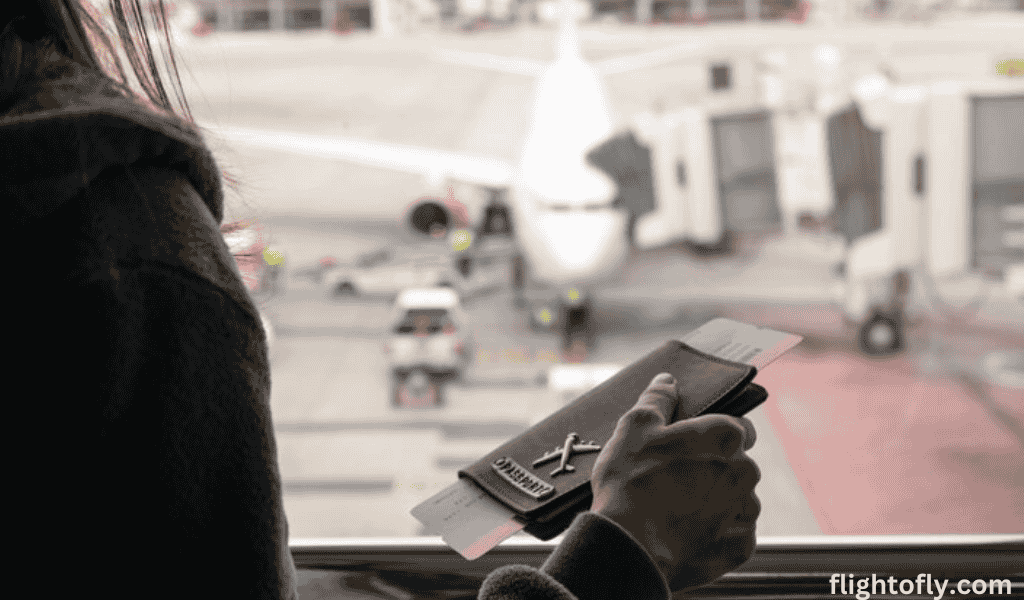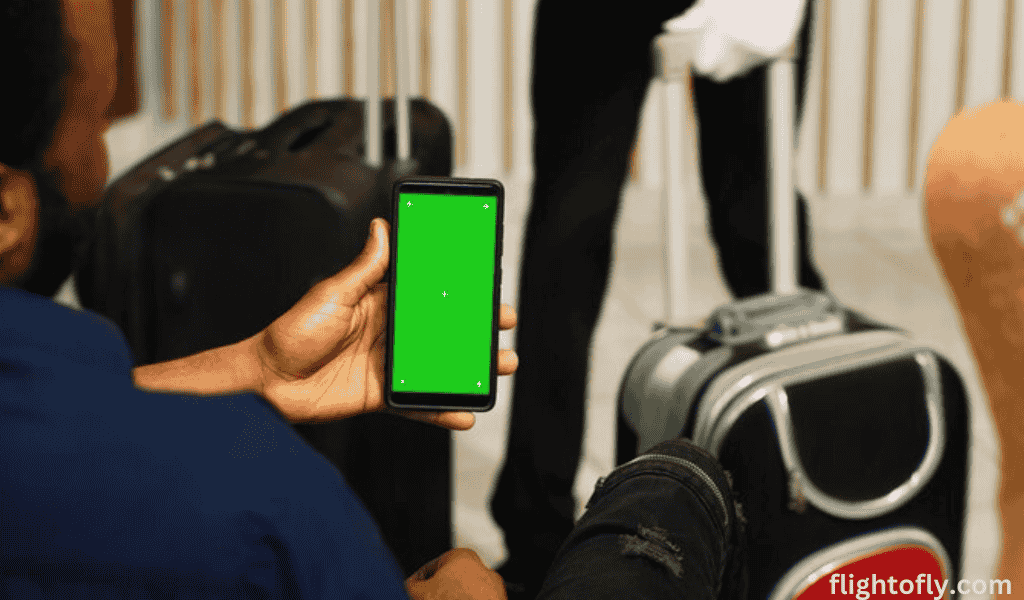
How Many Phones Allowed in International Flight to India: Rules, Tips, and Advice
You can carry more than one phone on an international flight to India, but customs has clear limits on what’s duty-free and what must be declared. One personal mobile phone is allowed duty-free, while any additional new or sealed phones worth over ₹50,000 may attract customs duty. If you’re bringing more than one device, laptop/mobile, make sure the extra ones look used and are declared honestly at arrival. Also note — phones with lithium batteries should always be packed in your hand luggage, not checked bags, to meet airline safety rules. Following these simple guidelines will help you avoid penalties, delays, or confiscation at Indian airports.
Many travelers bring multiple devices, such as personal and work phones or phones as gifts. Airlines generally do not limit the number of phones you can bring onboard, but they focus on battery safety and packing rules. To avoid complications, you should check Indian customs regulations, understand airline policies, and pack your devices securely.
In this guide, we will break down customs rules, provide packing tips, and offer advice for traveling with phones to India. By the end, you’ll be ready for a hassle-free journey with your devices.
Check: Cheap Flights from RDU to Miami Insider Tips & Tricks

Carry-On Rules for Phones in Flights
1. The Basics of Carry-On Rules
Airlines usually allow passengers to bring their phones in carry-on bags. These small devices pose no major problems in the cabin as long as they follow safety guidelines. Most people keep their phones with them to remain reachable or to pass time on long flights. Airlines rarely limit the number of phones you carry for personal use, but reading airline policies before you travel helps you understand any special conditions.
Carry-on rules often concern the safety of passengers and the aircraft. Items that threaten security, such as explosives or sharp objects, face strict rules. Phones, on the other hand, do not trigger major restrictions if you pack them responsibly. The key involves placing them in an accessible place in your carry-on so security officers can inspect them easily. You also want to keep them charged to power them on if asked by security staff. This simple step proves the devices work and contain no hidden issues.
2. Check Your Airline’s Policies
Each airline manages its own set of rules. Before your trip, take a few minutes to visit the airline’s official website and read about electronic devices and carry-on guidelines. Some airlines mention size limits, weight restrictions, or rules related to batteries. For instance, large power banks or spare batteries may face more scrutiny.
When traveling to India, consider that the airline you choose might have specific regulations. Low-cost carriers sometimes limit the total weight of carry-on bags. If you plan to bring multiple phones, spread them out if you can, or ensure your bag remains within the allowed weight. Knowing these details reduces guesswork at the airport. You do not want to rearrange your bags in front of a long security line. Preparation leads to a calm experience, and you never feel caught off guard.
Indian Customs Regulations for Phones
Here are the Indian Customs Regulations:
1. Customs Duty and Declaration Rules
When you arrive in India, customs officers may ask about what you bring into the country. India allows duty-free imports of certain personal items, and one phone usually causes no problem. The issue arises when you carry multiple devices that appear new or intended for resale. Customs officers consider commercial quantities or items beyond personal use as dutiable. In other words, if you show up with ten brand-new phones, you should expect questions, possible duty charges, or additional scrutiny.
To stay safe, always declare items if you feel unsure. Honesty helps you avoid serious issues. If customs officials discover undeclared items that exceed allowances, they may charge fines or seize the devices. Declaring prevents surprises and shows that you want to follow the law. The small delay might save your money.
2. How Many Phones Are Usually Allowed Duty-Free?
Travelers often bring one personal phone in their pocket and sometimes another phone in their bag. Customs officers generally permit one or two phones without imposing duty if the passenger shows that these devices serve personal use. A business traveler who carries a separate phone for work rarely faces issues with these small numbers.
Problems usually appear when you have a large number of devices. For example, five or six brand-new phones in their boxes may look like goods for sale. Customs officials know that some travelers attempt to bring electronics to resell them without paying duty. If you plan to bring several phones as gifts, consider bringing receipts or proof of ownership. This helps customs officers understand that you bought them abroad for personal reasons, not to start a small business.
3. Tips to Avoid Penalties
Declaring items and remaining honest offers your best defense. If you carry multiple phones, tell the truth at the customs counter. Officers may still impose a duty if you exceed the free allowance, but honesty often leads to a smoother experience. Consider this scenario: a traveler who tries to hide extra phones risks higher fines or confiscation. Someone who openly declares them might pay a small duty and move on.
Also keep the original boxes, receipts, or any documents that prove your phones belong to you. If an officer questions why you carry more than one phone, you can mention gifts for family members or a spare device for emergencies. Clear explanations reduce suspicion and help you sail through customs.

Packing and Security Checks at the Airport
1. How to Pack Phones Safely
Before you head to the airport, think about how to pack your phones. Phones remain fragile and expensive, so you want to protect them from bumps or scratches. Consider using a sturdy carry-on bag with cushioned compartments. Some travelers use small pouches or protective sleeves for their devices. Keep them away from items that might press against their screens or damage ports.
When packing multiple phones, do not stack them without protection. Each device should have its own case or protective layer. If you bring chargers or accessories, place them in a separate pouch to prevent scratches. Good packing methods help your devices survive long flights, rough baggage handling, and frequent inspections.
2. Security Screening Procedures
Airport security requires that you place all electronic devices in a separate tray during screening. This process makes it easier for security officers to inspect devices clearly on the X-ray machine. They might ask you to remove protective covers if the devices appear suspicious. Arrive at the airport with enough time to unpack and repack your belongings. Rushing through this step increases stress and the chance of losing small items.
Keep your phones charged. If a security officer requests that you power on a device, you need enough battery to show that the phone functions normally. This step ensures that no hidden threats exist. Dead batteries might draw extra attention and lead to delays. A quick top-up before you leave home helps avoid complications at the airport.
3. Avoiding Complications During Inspection
A calm and cooperative attitude helps you pass security smoothly. Respond politely to questions, follow instructions, and avoid jokes about security matters. If the officer asks you to remove cases or demonstrate a feature on your phone, comply promptly. Place your devices in a clear and organized manner to make the officer’s job easier. This approach usually leads to faster clearance and less hassle.
Limits on Carrying Multiple Phones for Different Purposes
1. Carrying a Work Phone and a Personal Phone
Many travelers carry two phones: one for personal communication and another for work. Airline staff and customs officials understand this trend. People often maintain separate lines or devices for business security, or they prefer a backup phone. Carrying two phones rarely triggers any special rules as long as both appear used and for personal use.
When traveling with multiple phones, label them to avoid confusion. For example, know which one contains your personal SIM card and which supports your office’s communication. If customs officials ask about why you have two phones, simply explain the reason. An honest and simple answer usually satisfies any inquiry.
2. Bringing Extra Phones as Gifts or for Resale
Many travelers bring extra devices to gift family members who live in India. India’s tech market offers many phones, but some travelers prefer to buy phones abroad for better prices or unique models. Bringing a few phones as gifts usually does not cause trouble if the quantity makes sense. One or two extra phones for close relatives often seems reasonable.
If you carry a large number of phones, customs officials may suspect commercial intent. They do not want people importing electronics in bulk without paying proper duties. If you plan to sell devices, follow the correct import rules, pay any required duties, and declare them. Attempting to appear as a casual traveler while carrying a small phone store in your luggage leads to problems. Honest declaration remains the best policy.
3. Considerations for Frequent Business Travelers
Business travelers often rotate devices more frequently due to company policies or travel needs. If you switch phones often, keep receipts and documents that track the device’s history. Customs officials may ask about multiple new devices each time you arrive. Good record-keeping and honest communication show that you follow the rules. If a device seems brand new, explain that you purchased it for a legitimate reason rather than for resale. This transparency builds trust with the authorities.
Airline and Airport Restrictions to Know
1. Restrictions Based on Battery Size and Power Banks
Airlines care about the type of batteries in your devices. Most phones use lithium-ion batteries that fit airline safety guidelines. Large external battery packs or power banks face more scrutiny because they can pose fire risks. Check your airline’s rules on carrying power banks. Some airlines limit their capacity or require them in carry-on bags only. If you travel with multiple phones and several battery packs, verify that all items meet the allowed ratings.
No airline wants a fire hazard in the cabin. Follow their guidelines to ensure safe and comfortable travel. If you have questions, contact the airline’s customer service before your trip. They can clarify any confusion about battery capacities or where to store power banks.
2. Regional Variations and Connecting Flights
Consider connecting flights if your journey involves more than one airline or country. Each region may enforce different rules. For example, one airport may allow certain items in carry-on luggage, while another airport may require you to stow them in checked baggage. Research all airports and airlines involved in your journey to ensure compliance at every step.
If you face different rules during a connection, flexibly pack your devices. Keep them easily accessible so you can rearrange if a connecting airline or security checkpoint requires changes. This approach avoids panic and last-minute scrambling in busy transit areas.
3. Special Airline Alerts and Travel Advisories
Airline policies can change over time. Security updates, safety advisories, or changes in customs regulations sometimes occur without much notice. Smart travelers check airline alerts and advisories before departure. A quick look at the airline’s official website or signing up for travel alerts helps you stay aware of any rule changes related to electronics.
If an airline issues a special advisory about electronic items, read it carefully and follow their instructions. Arriving prepared prevents confusion at the airport and helps you start your journey without stress.

What Happens if You Bring More Phones Than Allowed?
1. Possible Outcomes at Customs
Bringing several phones without proper declaration may lead to extra scrutiny. Customs officers may suspect commercial intent and charge duty on the devices. They could also ask for proof of purchase or request you to pay fines. In worst-case scenarios, they might confiscate the devices if they believe you attempted to cheat the system.
This situation sounds unpleasant, but you can avoid it. Follow the rules, declare all devices, and cooperate with customs officials. If you realize that you carried too many phones, explain your reasoning truthfully. Officials understand that some travelers bring gifts for loved ones. Your honesty and willingness to pay applicable duties often resolve the matter quickly.
2. Steps to Resolve Issues if Challenged by Authorities
If customs officials challenge you about the number of phones, remain calm and polite. Do not argue or show anger. Explain why you brought multiple devices. Show receipts, packaging, or anything that proves your intentions. If required, agree to pay the applicable duty to settle the matter. Avoid hiding information or lying, since these actions worsen the situation.
If language barriers appear, ask for an interpreter or speak slowly and clearly. Customs officers deal with many travelers, so they understand that confusion sometimes occurs. Show patience, and demonstrate that you respect their authority. Such behavior often reduces tension and allows you to move forward.
Practical Tips to Make the Process Simple
1. Plan Ahead
Smart planning solves most problems before they occur. Decide how many phones you truly need to bring. If one phone suffices, do not carry extra devices. If you need a second phone for work, bring it, but think twice before adding a third device. Each extra phone adds complexity when passing through customs and security.
If you must bring multiple phones, research their value and consider possible duties. Remember that honesty pays off at customs. Understand the purpose of each device so you can explain it without hesitation. Proper planning ensures a stress-free journey.
2. Keep Proof of Purchase
Receipts offer strong evidence that you own the phones and bought them for personal reasons. Keep receipts in a small folder in your carry-on bag. If customs asks for proof, hand over the receipts. This step reduces doubts and often speeds up the process. When officers see that you willingly share documents, they view you as a responsible traveler who respects the rules.
If you have older phones or used devices, consider keeping some form of identification or documentation. A simple note or photograph of the device before you started the trip might help. You want to leave no room for misunderstandings.
3. Use Clear Communication at the Airport
Communication matters when dealing with customs, security personnel, or airline staff. Speak clearly and directly. If you bring multiple phones, simply say so. Offer brief explanations and avoid long, complicated stories. Officials appreciate honesty and clarity. Confusing explanations raise suspicion, so stick to the facts. For example, say, “I have two phones. One is my work phone, and one is for personal use.” This straightforward approach helps everyone understand the situation.
Conclusion
In short, the question, “How many phones allowed in international flight to India?” requires considering both airline guidelines and Indian customs regulations. Generally, you can carry one or two phones without issues. These devices count as personal electronics, and airlines do not forbid them. Problems often arise when travelers bring large numbers of phones, especially new ones, which may suggest resale intent. In those cases, customs officers may charge duties or even confiscate the items.
You can avoid trouble by preparing in advance. Check your airline’s rules, carry only the number of phones you need, and pack them carefully. Keep receipts and supporting documents ready, and never hesitate to declare items if you feel unsure. Customs officers appreciate honesty. Short explanations go a long way toward smoothing the process.
With the right approach, you will breeze through airport security and customs inspections. Your journey to India will remain pleasant and stress-free when you know what to expect. Treat customs regulations and airline rules as helpful guidelines that ensure a safe and orderly travel experience. By following these tips, you can enjoy your visit to India with your devices ready to capture memories, stay connected, and serve your everyday needs.
Common Questions About Carrying Phones to India
Can I bring 2 phones to India duty-free?
Yes, you can bring two phones duty-free to India if they are for personal use. However, if they appear brand new or in unused condition, customs may ask for proof that they are for personal use, and you may have to pay duty for additional phones.
How many phones can I carry from Australia to India?
You can carry up to two phones for personal use without paying customs duty. Anything beyond that will need to be declared, and you might be asked to pay customs duty based on the value of the devices.
Can I carry 3 phones on an international flight?
Carrying three phones is generally fine for personal use, but customs may question you if they are new and in their boxes. It’s important to declare them at customs to avoid any penalties or duty charges.
How many phones are allowed in a flight to India from the UK?
India allows travelers to bring one phone duty-free for personal use.
If you are carrying more than one phone, you must declare them at Indian customs.
For additional phones (beyond the first one), duty will apply, especially if the phones are new or appear to be for resale.
Can we carry two mobiles in flight?
Yes, you can carry two mobiles on a flight, and it’s quite common. Airlines don’t have any issue with it as long as they are for personal use and comply with battery safety regulations.
All Categories
Recent Posts
How Long Is the Flight from LAX to Tokyo?
Atlanta to New York Cheap Flights, Airlines, Prices & Travel Tips 2025
How Long is the Flight from the UK to Turkey?
Tags





